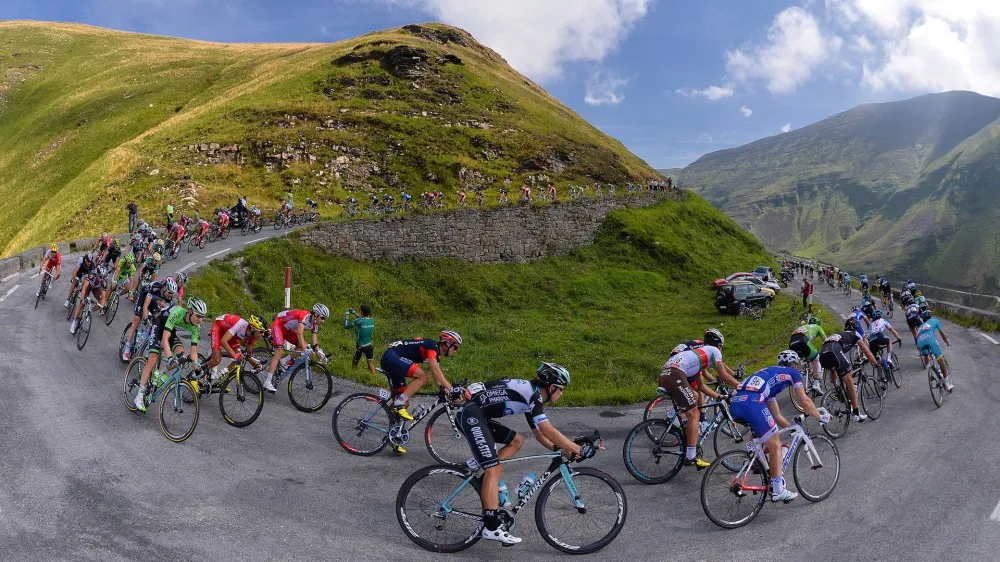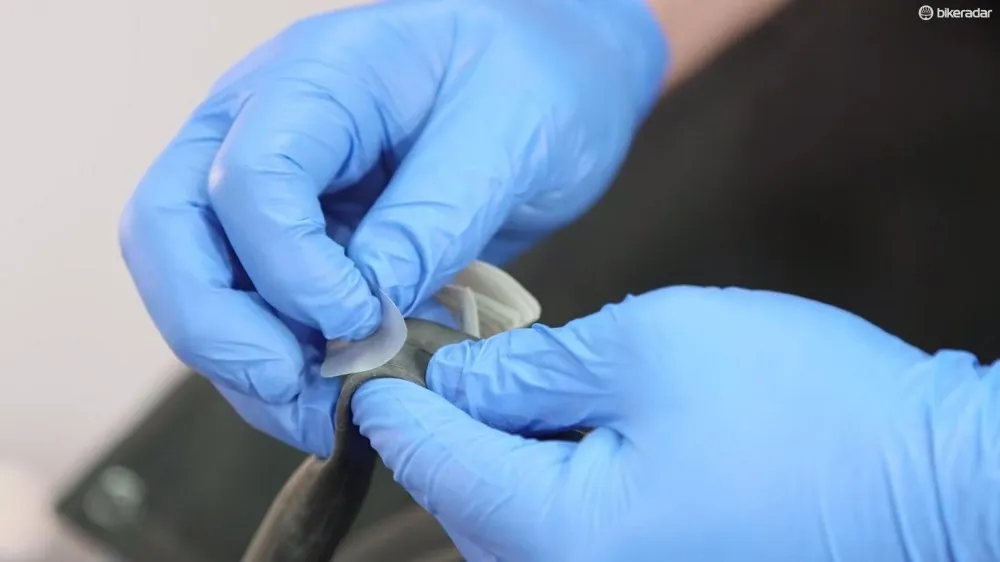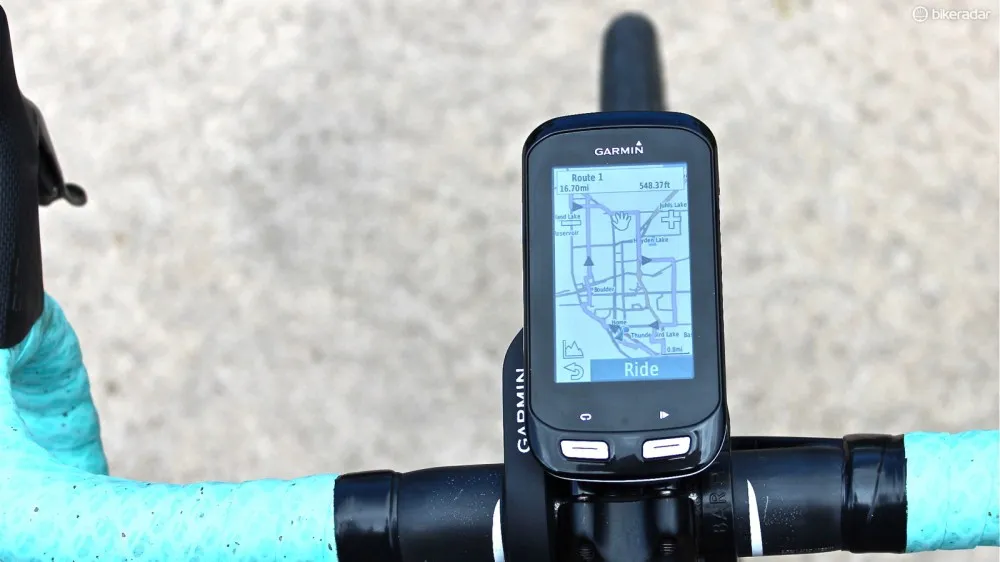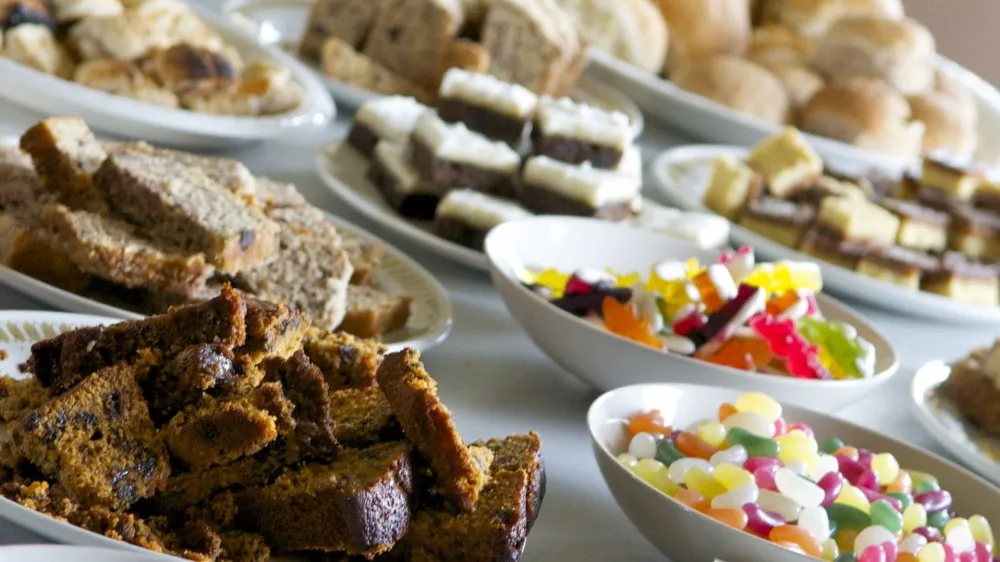If you’re thinking of riding your first gran fondo in 2015, these 21 tips will help ensure the event sparks your enthusiasm and has you itching for more.
Decide your distance
Everyone loves a challenge – that’s the point of gran fondos – but think realistically about how many hours or riding you can squeeze in each week and what your longest rides have been so far. If you’re commuting irregularly and your maximum ride distance has been 20 miles, picking a 100-miler (160km) in two months' time might mean a DNF (did not finish) on the results sheet.
If you’re determined for your first ride to be a big one, choose an event with multiple distances – if you’re legs aren’t up to it on the day, you can easily drop down to a shorter route.
Pick a local event
Choosing a gran fondo that’s not too far from home will mean a better night’s sleep in your own bed and less traveling to the start line. There’s also the benefit of increased confidence that comes from riding on more familiar roads – and the chance to train on them in advance.
Learn to ride clipless
Using cleats and clipless pedals dramatically reduces the effort needed to cycle, providing power from your legs virtually all the way around the pedal stroke. They’re also safer, with no slipping off the pedals at crucial moment. They’ll almost always unclip automatically in the event of a crash too.
Getting used to them takes a little time. It’s all too easy to forget to unclip when coming to a stop and do the slow topple of shame. Once you’ve had a bit of time on them though, you’ll never look back.
Check out our pedals buyer’s guide and best road pedals review. You’ll also need some road cycling shoes.
Get the miles in
Going out for a 20-minute flat-out effort might help build your top-end power and speed, but it’s the longer rides that will boost your cycling endurance and prepare you for a gran fondo. Riding at lower intensities that allow you to hold a normal conversation on the flats will increase endurance, giving you the stamina you’ll need for a gran fondo event. To avoid overtaxing your body, increasing the distance by only around 10 percent each week.
Join a club
Riding in a group is great for motivation as well as learning how to navigate safely with multiple cyclists around you. If none of your mates are of the two-wheeled persuasion, find your local cycling club and join them for a ride.

Riding with a club can be great for motivation and there's plenty to learn from more experienced members
Most clubs allow a few taster rides before having to sign up and nearly all offer graded routes similar to skiing (black, red, blue, and so on) with different distances and average speeds advertised in advanced. Don’t worry about your first meeting – if you love cycling, you’ll quickly find friends.
Train on hills
If your event has a lot of steep climbs (it almost certainly will), find a hill near home that approximates those you’ll be taking on during the event and regularly test yourself against it to get used to these leg-busting, lung-burning efforts.
Practise your climbing technique – seated spinning in easier gears rather than out the saddle stomping, keeping your upper body as relaxed and unmoving as possible. Lightly grab the tops of the bars near the stem to sit up, open the chest and breathe deeply, focusing on pushing air out of your lungs. You’ll soon become a king of the mountains.
Check out this article on hill climbing training from Tour winner Greg LeMond and Chris Baldwin’s how to climb like a pro feature.
Practise descending
It’s just as important to get plenty of downhill experience as it is to spend training time scaling mountains. With a bit of practice it soon becomes easier and faster to descend safely without your hands clamped over the brake levers.

Pros are experts at descending, but with time, you'll be on your way to learning those skills
Descending well just comes down to keeping a cool head, common sense and building confidence. Learning how to descend is a skill that will serve you well throughout your cycling career, helping to keep you safe, in control and enjoying the speed rush.
Ex-pro Chris Baldwin shows you how in our Descend like a pro with Chris Baldwin feature!
Log your kit
In the weeks leading up to your event, check the weather religiously. Note down the temperature and wind speed as well as the kit you used for each ride and whether you were hot or cold. This way, you can plan your sartorial choices the night before your event and better tread the fine line between hot and cold when working hard on the bike. There are even apps such as Bike Repair, which helps automate this process.
If in doubt, use several thin layers and arm warmers that can be easily peeled off and stowed in jersey pockets as the day (hopefully) warms up.
Learn how to change a puncture
Everyone gets punctures, they’re especially common on the roads less traveled gran fondo organizers choose to avoid traffic, so it’s really important you know how to change a puncture and carry the essentials with you during training and on event day.

Learning how to fix a puncture is an essential skill. Our video shows you how
A spare tube makes your first flat a quick change, while carrying a couple of tire levers, some self-adhesive puncture patches (like these from Park Tools) and a mini pump will get you back on the road should lightening strike twice. Pack this lot along with a mini-tool into a saddlebag for easy access.
Prep your bike
Give your bike a good clean and lube the chain before your gran fondo. Not only will it make your bike look nicer and improve drivetrain performance, but it’s also a great opportunity to unearth any potential mechanical issues ahead of the event.
Make sure bolts are secure and check for frayed cables and any cracks or foreign objects in the tires. If anything is amiss, take a trip to your local bike shop to get it sorted ASAP.
Fuel beforehand
In the few days running up to your gran fondo, eat regular meals, taking on a few more carbohydrates than usual without gulping them all down in large servings – spread your intake throughout the day and drink plenty of water.
The night before your gran fondo, have a good, healthy meal. Avoid too much fiber, but don’t go mad on carbs either if you’re not used to eating lots of them. It doesn’t have to be a feast and certainly don’t eat beyond feeling comfortably full. Drink regularly the day before your gran fondo to keep you hydrated right until bedtime.
Even if you’re nervous on event morning, getting a good breakfast in well before riding is key to begin the day’s fueling – you’re going to need all the calories you can get later on. Begin hydrating too, sipping rather than sloshing down your coffee.
Don’t neglect the time between arriving at the event venue and actually setting off. There can be a lot of waiting to get started, so munch away and sip a drink between nervous toilet stops that form part of every first timer’s pre-event ritual.
It’s not a sprint start
At the beginning of your gran fondo, it’s all too easy to over enthusiastically push the pedals as the tape is lifted from the starter pen, releasing dozens of athletes onto the road.

After waiting in the start pen, the excitement of starting can easily mean pushing hard and wasting energy early on
Trying to stay with a group beyond your ability means your heart rate will rise, legs will sting and you’ll immediately eat into your energy reserves.
Keep an eye on your speed or heart rate and back off if you’re overtaxing yourself. Having some time to warm up properly will result in a more comfortable day, helping to avoid a complete muscular breakdown in the closing stages – or being one of those cyclists chucking up on the first big climb.
Find a suitable group
If you’ve not signed up for an event with friends or club mates of a similar ability, your best bet to maintain morale and stick out the distance will be to ride at least some of the route in a group.
After you’ve warmed up, try sticking with a few groups as they go by, dropping off if they’re too fast. Once you’ve found that ‘just right’ speed, sit in the pack, making brief turns on the front if everyone is rotating through-and-off. Don’t feel pressured to set the pace – or up it – for too long though. The key is communication – tell the other riders it’s your first event and they’ll probably look after you.
Question yourself
Keeping a sense of your effort level throughout the day is key in helping you reach the end with legs in tact. Regularly reassess how you’re feeling. Ask yourself: am I thirsty? Am I hungry? Is my breathing too heavy? Am I pushing too big a gear? Are my legs recovered from the last climb? Am I too hot? Too cold? Do I need the loo? All these things have an effect on your efficiency, energy and ability to ride strong, so ask yourself how it’s going and react accordingly.
Plan your route

GPS bike computers such as the Garmin 1000 offer maps as well as elevation, helping you to pace yourself ahead of big climbs
If you’re lucky enough to have a bike computer with GPS mapping (or a smartphone app that does the same), adding your gran fondo’s route to your device can be a great stress reducer. You won’t have to worry about going off course and can even get an idea of when the next big hills are due on the elevation profile screen. Taking it a bit easier before hitting the foot of a climb can make a world of difference.
Eat religiously
Once on the bike, eat little and often with never more than 30 minutes between refuels. A good rule of thumb is that if you even so much as think about food, it’s time to have some. If you’re not comfortable eating without stopping, then stop. The aim is to enjoy yourself and complete the event.
What you eat is up to you. Some prefer energy gels while others might thrive on flapjacks or cake bars. The main thing is to stick to whatever you’ve been using in training.
Drink religiously
Drinking to thirst is the best way to moderate your fluid intake. If you start think about drinking, have a sip. Don’t worry about running out – you’re better drinking all you have then refilling at the next feed station rather than holding back and getting dehydrated.
Regarding drink choices, it’s also down to what you’re used to – don’t expect your guts to readily accept a highly concentrated sports drink for the first time during your event. If you are using a sports drink, research in advance what’s on offer at aid stations to test if it settles well on your stomach before the big day.
Make the most of feed stations
Event feed stations give you a chance to refill your pockets with food and let you relax off the bike for a while. There might be a temptation to stuff your face, but try to be sensible. Nip to the toilet to lighten yourself before continuing too.

Everyone's tastes are different and most events have a wide selection on offer – don't over-fill yourself though
If it’s not too cold, use the time spent at feed stops to relax and lightly stretch. Five minutes here could avoid hitting the wall later on. On the other hand, if it’s going to mean a complete cool down of your muscles, get through quickly without rushing.
Either way, take time to warm up again once back on the bike.
Break it down
If you’ve never ridden the distance of the gran fondo you’re attempting before, then breaking the distance down into more manageable chunks is a great way to make the task ahead seem achievable. You can keep this simple by concentrating on five- or 10-mile segments, break it down by the distance to the next aid station or thinking only about the time until your next feed.
Towards the end of events, the miles can seem to stretch forever. In these situations, think about breaking the distance down into familiar routes you’ve tackled multiple times and know aren’t too taxing such as short commutes or even cycling to the shops. The miles will soon be zipping by.
Enjoy it
Remember throughout your gran fondo that you’re doing this for fun. Chat with other riders, soak up the best views the countryside has to offer and enjoy the experience as much as possible.

Collecting your medal will mean that you're officially a gran fondo finisher. Congratulations!
The last third of every gran fondo is always tough, be rest assured that as you near the finish, the end of your long day becoming almost tangible, you’ll start to feel stronger. Imagine how great you’ll finish at the end and there will be no stopping you as you sprint to victory having completed your first gran fondo.
Refuel
Your challenge might be complete, but an 80-mile (130km) gran fondo can burn upwards of 2,500 calories. Even with all the sports nutrition and feed station treats that have nourished you along the way, you'll almost certainly still have a deficit to make up. Sometimes lack of hunger can be a side effect of endurance events, but it's really important to get enough food afterwards.
If you've been abstaining from curries, pizza or a Chinese takeaway in the run up to your event, now's the time for guilt-free eating of these 'naughty' foods, along with fruit and veg of course. Thinking about how you're going to reward yourself with your favorite meal after the event can also be a great motivator when turning the pedals seems bleak half-way through.













